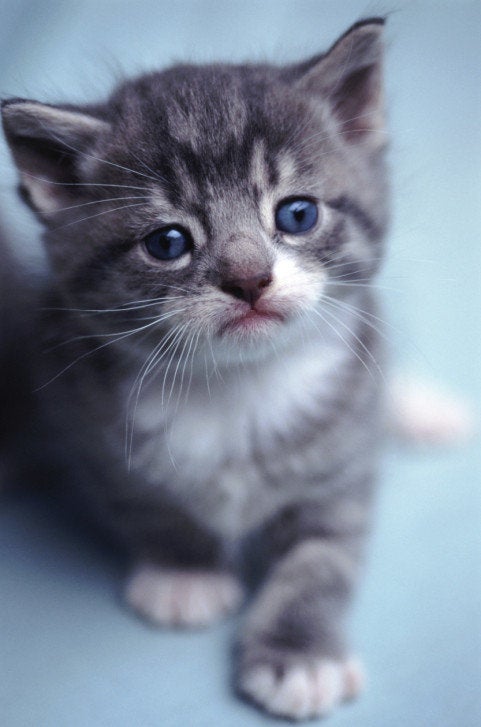
According to its authors, the Geometric analysis of macronutrient selection in the adult domestic cat, Felis catus is the most extensive study of macronutrient regulation ever conducted on any carnivore. The results of this study are extremely exciting, but not surprising to those of us who understand the importance of providing species-appropriate animal food to companion animals.
The study was conducted to determine if adult domesticated cats, given a choice, would deliberately select food that is biologically appropriate for them (similar to the prey they would hunt and eat if they lived in the wild).
From the study:
Most domestic cats are fed commercial pet foods by their owners. Some of these products are moist and others are based on a dry formulation.
As well as differing in water content and texture, there are macronutritional differences between wet and dry commercial foods, notably a higher carbohydrate content of dry foods (required for their manufacture).
Our results show strong nutritional regulation, reinforcing the fact that macronutrient regulation is common across trophic levels [feeding positions in a food chain] and providing important information for the design of domestic cat nutritional regimes.
Fascinating Results
• Given the option, the cats exclusively chose high-protein food over high-carb food even when there was less of the high-protein food available.
• Cats offered a choice of three foods with variable amounts of protein, carbs and fat mixed them to achieve a daily intake as follows:
100 calories or 52 percent from protein
67 calories or 35 percent from fat
24 calories or 12.5 percent from carbs
• When the cats were restricted to a high-carbohydrate food, they did not eat enough of it to get the targeted amount of protein (52 percent).
• Experienced cats eating dry food increased their protein intake and ate fewer carbohydrates than naïve cats offered the same choices. This indicates that given the option, cats learn to avoid eating excessive amounts of carbs.
Research Proves It: Cats and Carbs Don't Mix!
Cats are obligate carnivores, meaning they have nutritional requirements that can only be met with a diet based on animal tissue. The macronutrient profile for cats is high in protein and fat, consistent with a meat-based diet.
According to study authors:
The carbohydrate ceiling explains many of the intake patterns seen in both dry and wet diet experiments and suggests that cats may only be able to process ingested carbohydrate up to a certain level.
The feline body is specifically designed for a low-carb diet. Indicators your kitty isn't equipped by nature to process a lot of carbohydrates include:
• No taste receptors for sweet flavors
• Low rates of glucose uptake in the intestine
• No salivary amylase to break down starches
• Reduced capacity of pancreatic amylase and intestinal disaccharidases
In other words, cats don't produce the enzymes required to digest carbohydrates. The only carbs felines eat in the wild are pre-digested and are found in the stomachs of prey animals.
If your kitty's body is incapable of digesting a heavy carbohydrate load and she's eating a cat food with high carb content, she could potentially develop digestive disease and other serious conditions, like diabetes and pancreatitis, related to eating a diet unfit for her species. And certainly, too many carbohydrates aren't the only problem with most processed pet foods.
What About Your Favorite Feline?
If you're convinced it's time to transition your carnivorous kitty to a more biologically-appropriate food, there are a few different ways to approach it.
My favorite, as regular readers of my newsletter know, is to learn how to prepare your pet's meals at home with ingredients you select based on balanced recipes from an expert nutritional source.
If you don't feel you have the time or resources right now to prepare homemade meals for your cat, I believe that the next best thing is to feed a commercially prepared, balanced, raw diet. These diets are usually found in the freezer section of small or upscale pet boutiques -- not in the big box pet stores. You can also find a selection online. Unfortunately, this option is just too costly for many pet owners.
If neither of these choices works for you, try taking small steps up the pet food quality ladder. Take a look at my video 13 Pet Foods -- Ranked From Great to Disastrous to find out where your pet's food ranks and how you can make gradual improvements to your beloved kitty's diet over time.